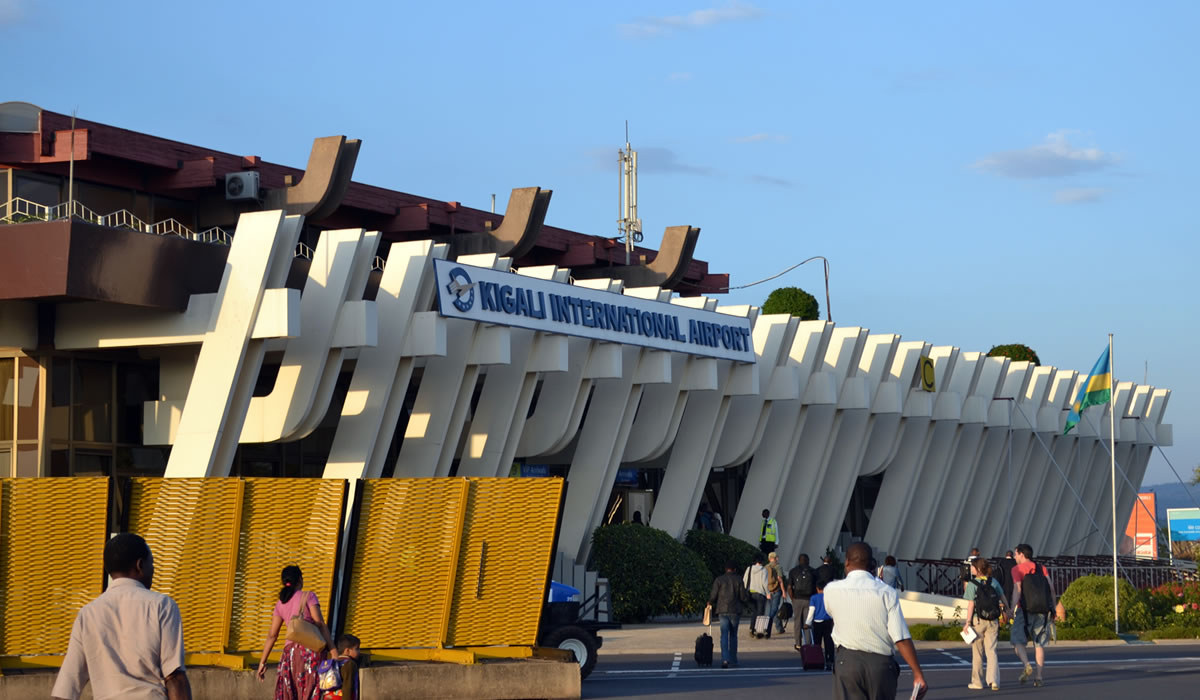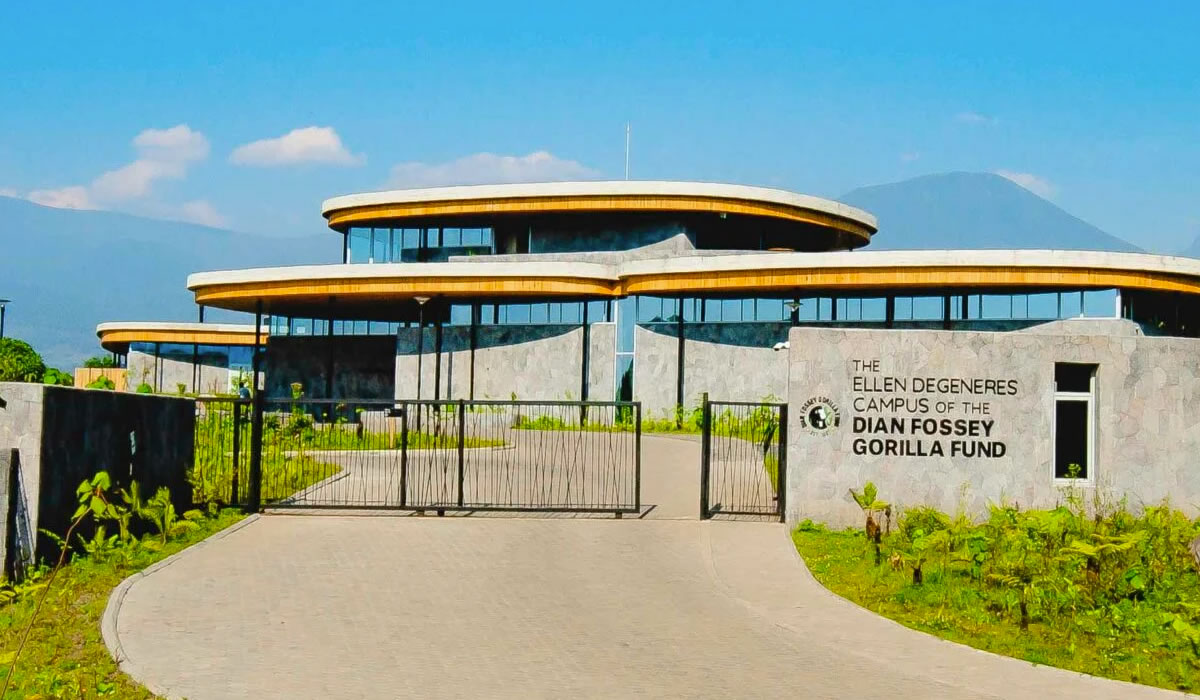Nyungwe Forest National Park, located in the southwestern region of Rwanda, is a pristine and…

Kigali International Airport
Kigali International Airport, located just 10 kilometers east of Rwanda’s bustling capital city, Kigali, serves as the primary gateway into the “Land of a Thousand Hills.” With its strategic location, modern infrastructure, and growing reputation for efficiency and safety, Kigali International Airport (IATA: KGL, ICAO: HRYR) has become a cornerstone of Rwanda’s economic and tourism ambitions. Though modest in size compared to Africa’s major air hubs, Kigali International Airport plays an outsized role in connecting Rwanda to the rest of the continent and the world, positioning itself as a rising star in African aviation.
Originally built in the 1960s, the airport has undergone multiple phases of renovation and expansion, most notably in the last two decades, to meet the growing demands of international air traffic and domestic needs. It now features a modern terminal equipped with contemporary amenities, including VIP lounges, duty-free shopping, currency exchange services, car rentals, and restaurants. The airport is designed with traveler comfort and efficiency in mind, offering short walking distances between check-in, immigration, and boarding gates, making it especially convenient for transit passengers and tourists. Its facilities, while not enormous, are clean, secure, and managed with a high standard of professionalism, reflecting Rwanda’s broader commitment to order and cleanliness.
Kigali International Airport is operated by the Rwanda Airports Company and serves as the main hub for RwandAir, the national carrier. RwandAir’s expansion over the years has contributed significantly to the airport’s growth, offering direct flights to key African cities such as Nairobi, Johannesburg, Accra, Lagos, and Lusaka, as well as international destinations including Dubai, Doha, London, Mumbai, and Brussels. These connections have facilitated Rwanda’s aspirations to become a regional hub for business, diplomacy, and tourism. The airport also hosts other major international airlines like Qatar Airways, Turkish Airlines, Ethiopian Airlines, Kenya Airways, and KLM, further enhancing its connectivity.
Security and safety are among the airport’s most acclaimed features. Kigali International Airport has received praise from international aviation bodies for its strict adherence to safety protocols, especially during the COVID-19 pandemic. Its health screening and sanitation measures set a benchmark in the region, earning it recognition as one of the safest airports in Africa. Additionally, Rwanda’s broader commitment to stability, digitalization, and zero tolerance for corruption is reflected in the smooth functioning of airport services, from passport control to baggage handling.
In terms of structure, the airport comprises three main terminals: the main terminal used for international and domestic flights, a VIP terminal used for government and diplomatic delegations, and a cargo terminal that supports Rwanda’s growing trade and logistics sectors. The cargo terminal, in particular, has become increasingly important in the transportation of fresh produce, flowers, and manufactured goods, linking Rwanda to international markets and supporting the country’s export-led development agenda.
Despite its successes, Kigali International Airport has reached near-maximum capacity due to increasing passenger numbers, which averaged over 1 million annually before the COVID-19 pandemic and are projected to surpass that figure significantly in coming years. In response, the Rwandan government initiated the development of the Bugesera International Airport, a new state-of-the-art facility located approximately 40 kilometers southeast of Kigali. Once completed, Bugesera is expected to handle over 7 million passengers annually in its first phase, with expansion capacity up to 14 million, thereby relieving congestion at Kigali International and reinforcing Rwanda’s ambition to be a continental aviation hub.
However, until Bugesera becomes operational, Kigali International remains the heartbeat of Rwanda’s aviation sector. It plays a crucial role in supporting the country’s booming tourism industry, especially as visitors flock to Rwanda for its iconic mountain gorilla trekking in Volcanoes National Park, safari adventures in Akagera National Park, and cultural tours in Kigali and beyond. The airport’s proximity to central Kigali allows for short transfers to hotels and city landmarks, making it highly convenient for both leisure and business travelers. The government’s investment in transport infrastructure, including the upgrade of roads linking the airport to the city and nearby regions, ensures seamless connectivity upon arrival.
In addition to its logistical and economic functions, Kigali International Airport also serves a symbolic role in Rwanda’s national narrative. For many visitors, the airport is their first impression of the country, and the government has made conscious efforts to ensure it reflects Rwanda’s progress, hospitality, and unity. The airport’s design incorporates elements of Rwandan culture and art, with interior decorations and motifs inspired by traditional Imigongo patterns and local crafts. Customer service staff are trained not only in aviation protocol but also in cultural diplomacy, providing travelers with a warm and professional welcome that sets the tone for their stay in Rwanda.
Kigali International Airport is also increasingly involved in regional and international aviation discussions. Rwanda’s partnership with global aviation players, including Qatar Airways, one of the world’s leading airlines has opened doors for knowledge transfer, investment, and cooperation. Qatar Airways’ acquisition of a 60% stake in the new Bugesera Airport underscores Rwanda’s intent to position itself on the global air transport map, with Kigali International Airport playing a critical transitional role in that process.
Environmental consciousness is another key pillar in the airport’s development strategy. Rwanda, known for its green policies and plastic-free legislation, extends these principles to its aviation sector. Kigali International Airport has taken steps to reduce its environmental footprint through waste management systems, water conservation efforts, and encouragement of eco-friendly practices among airport businesses and passengers.
Looking ahead, Kigali International Airport is poised for continued relevance even after the new Bugesera facility comes online. It is expected to transition into a secondary airport that may focus on domestic and regional flights, military operations, private jets, and cargo services. This dual-airport system would align Rwanda with global aviation trends seen in countries like South Africa, Kenya, and the UAE, where older airports are adapted for specialized roles once new ones are commissioned.
In conclusion, Kigali International Airport is far more than a transportation hub—it is a symbol of Rwanda’s vision, resilience, and ambition. Through its careful management, strategic partnerships, and commitment to quality service, the airport reflects the broader transformation taking place across Rwanda. It welcomes the world not just with open runways, but with open arms, offering a smooth, safe, and enriching entry point into one of Africa’s most forward-looking nations. As Rwanda continues its upward trajectory on the continental and global stage, Kigali International Airport will remain a vital engine of connectivity, commerce, and national pride.




